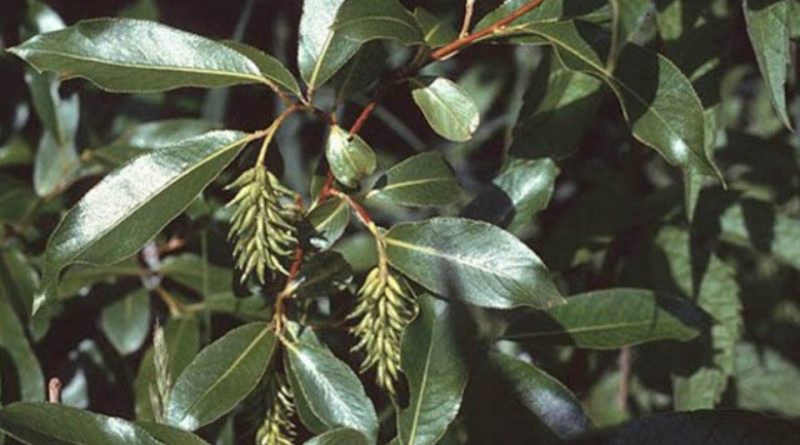Salix pentandra
Salix pentandra
The Bay willow (Salix pentandra L.) is an arboreal species belonging to the Salicaceae family.
Systematic –
From a systematic point of view it belongs to the Domain Eukaryota, Kingdom Plantae, Subarranean Tracheobionta, Superdivisione Spermatophyta, Magnoliophyta Division, Magnoliopsida Class, Subclass Dilleniidae, Salicales Order, Family Salicaceae and then to the Genus Salix and to the Specie S. pentandra.
Etymology –
The term Salix is the classical Latin name of willow, perhaps associated with the Sanskrit saras acqua. The specific epandet pentandra comes from the Greek πέντε pénte five and from ἀνήρ, ἀνδρός aner, andrόs male, male element: with five stamens.
Geographic Distribution and Habitat –
The Bay willow is a species native to northern Europe and northern Asia; it is a plant spread from the British Isles to central Siberia, and from the Alps to Scandinavia. In Italy, it is quite common in the Western Alps and is also found in Agro Nero in the Monti della Laga (Rieti).
Description –
Salix pentandra is an arboreal species that can reach 12-15 meters, but often takes on a shrub. It has a gray and striated rind, reddish-brown in the young branches.The leaves are deciduous, alternate, petiolate, glabrous, from ovate to lanceolate, with toothed margin and provided with glands that secrete an aromatic yellow resin; the upper page is glossy and dark green, the lower one is opaque and glaucous green.The flowers are unisexuals gathered in cylindrical spikes, 5-7 cm long, carried by long leaves. The flowers are subtended by yellowish, ovate, rounded bracts and glanded at the apex. The fruits are oblong capsules with numerous seeds accompanied by hairs.
Cultivation –
Salix pentandra is propagated by seed in wet soils immediately after harvesting, since the seed’s vitality is not maintained for a long time, or vegetatively through woody cuttings from November to February or semi-woody cuttings from June to August. Due to the characteristics of the root system it is preferable to put the cuttings directly to the home taking care of the mulching especially at the beginning, or to carry out transplants during the autumn when the plant is still very young. It is a long-lived plant, but like the other willows it is rapidly growing. For his government it is not strictly necessary to prune it every year, or every two, unless it is cultivated to obtain the young jets to be used for the manufacture of baskets. Left to develop freely you get a very beautiful and ornamental plant.
Uses and Traditions –
The Bay willow is cultivated in central Europe as an ornamental garden essence. In Italy it is used in restoration interventions that use naturalistic engineering techniques, especially in mountain areas. It is a plant to be used along watercourses, suitable for covering wet slopes and reforestation of wet uncultivated areas. The Bay willow has very ornamental leaves and is ideal as a furnishing element in mixed trees, in wet locations perhaps near fountains or ponds, accompanied by other willows not necessarily smaller.It is a species very frequented by bees and by the pollinators, since pollination is anemophilous, can become part of a natural garden in which to actively contribute to the health of the small ecosystem increasing its overall biodiversity.
Preparation Mode –
Like all willows, also the Bay willow, contains salicin and is used for the preparation of wicker for the packaging of various objects. However, it does not have particular uses of a pharmaceutical or alimentary nature.
Guido Bissanti
Sources
– Acta Plantarum – Flora of the Italian Regions.- Wikipedia, the free encyclopedia.- Treben M., 2000. Health from the Pharmacy of the Lord, Advice and experience with medicinal herbs, Ennsthaler Editore- Pignatti S., 1982. Flora d ‘Italia, Edagricole, Bologna.- Conti F., Abbate G., Alessandrini A., Blasi C. (edited by), 2005. An annotated checklist of the Italian vascular flora, Palombi Editore.
Warning: Pharmaceutical applications and alimurgical uses are indicated for informational purposes only and do not in any way represent a medical prescription; there is therefore no liability for their use for curative, aesthetic or food purposes.


